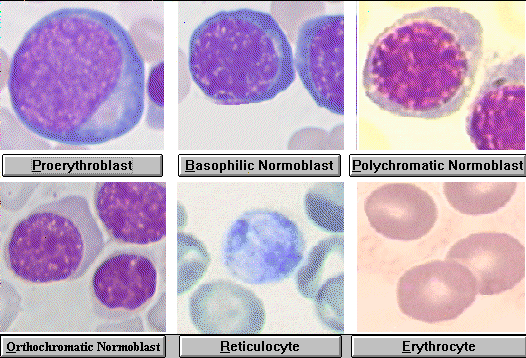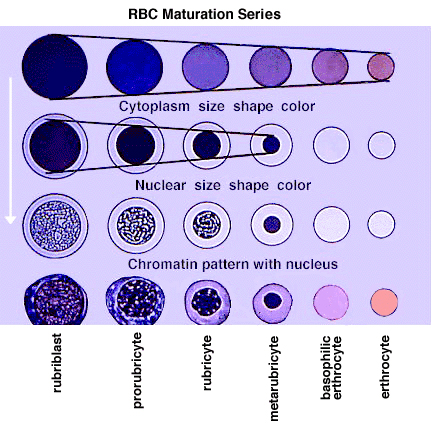- Erythropoiesis is divided into a number of stages. The earliest recognisable red cell precursor in the bone marrow is known as the proerythroblast (Pronormoblast); this gives rise to the basophilic erythroblast(Basophilic normoblast), the polychromatic erythroblast (Polychromatophilic normoblast), the orthochromatic erythroblast (Orthochromic normoblast), the polychromatic red cell (reticulocyte) and the mature red cell. Normal erythropoiesis is characterised by the following progressive changes:
(a) Reduction in cell size
(b) Maturing of the cytoplasm: as the cytoplasm gradually acquires haemoglobin it changes from a basophilic to an eosinophilic colour. This change is accompanied by a gradual loss of RNA
(c) Maturing of the nucleus: the chromatin strands gradually become condensed and pyknotic; nucleoli are lost and the nucleus is finally extruded at the orthochromatic stage while the cell is still within the bone marrow. The resulting polychromatic red cell or reticulocyte still contains some RNA, which, after a period of 1–2 days, completely disappears and a fully haemoglobinised mature red cell or erythrocyte results.
- These cell characteristics are seen in fixed preparations stained with a Romanowsky stain.
- Sources:
Microscopic haematology: a practical guide for the laboratory / Gillian Rozenberg.


